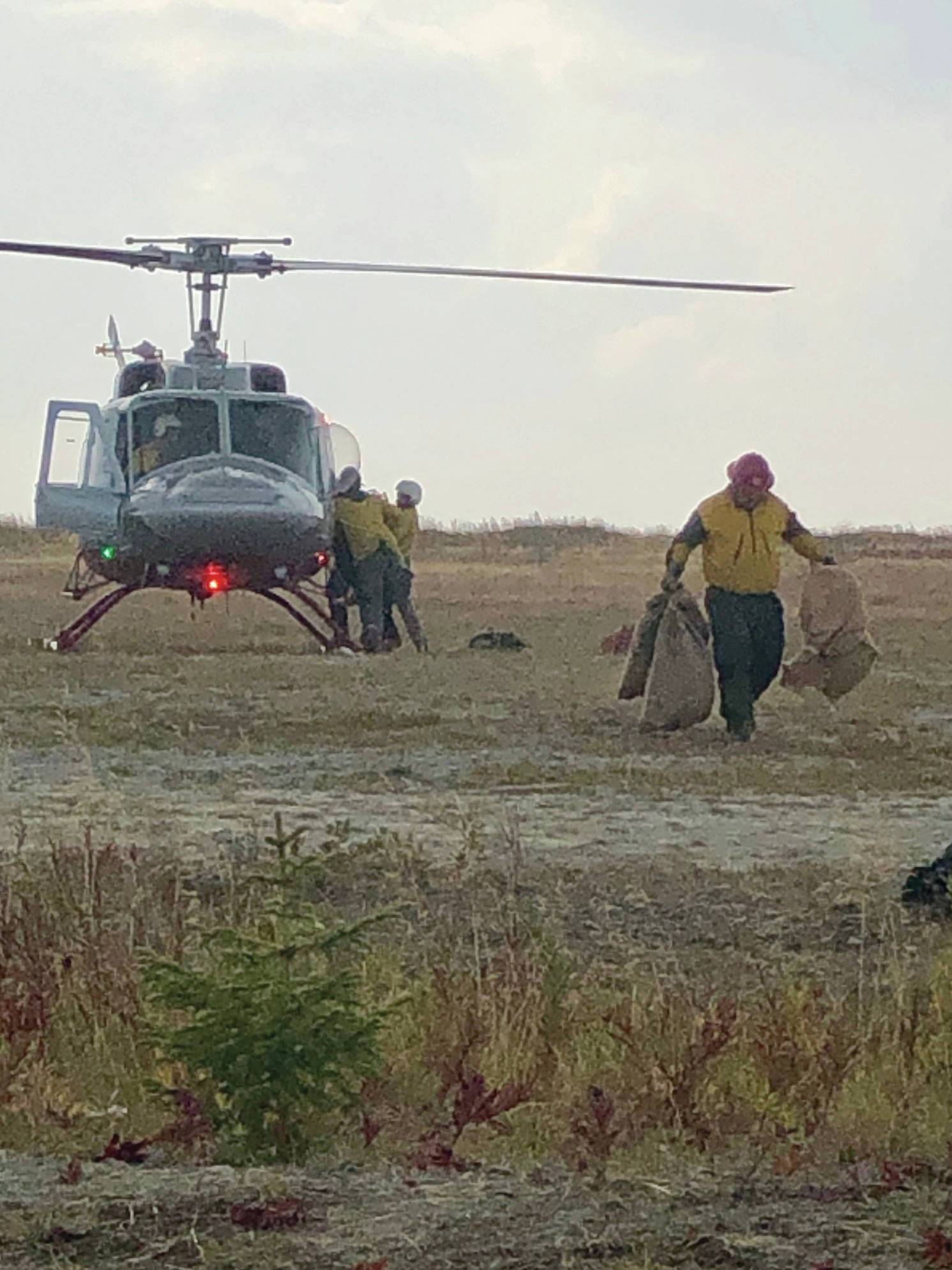While a brief afternoon rain shower fell over parts of the lower Kenai Peninsula on Monday, very little rain fell on the Caribou Lake fire.
The ongoing drought conditions have caused the vegetation and ground there to remain excessively dry, according to a Tuesday update from the Alaska Wildland Fire Information website.
The fire about 25 miles northeast of Homer remained at 900 acres with 20% containment as of Monday evening.
Satellite infrared measurements showed heat signatures are more than 48 hours old. However, in the field firefighters reported finding heat 2 inches down into the duff, said Sarah Saarloos, a public information officer with the Alaska Division of Forestry.
“That adds to the amount of time it takes to contain this type of fire,” she said “There are a lot of factors making it challenging to get full containment. The fire has burned so deep because those duff layers are so dry.”
About 1/10 of an inch of rain fell on the lower peninsula. That’s well short of what Alaska needs to thoroughly soak and stop wildfires.
“They (wildfire experts) say it takes 4 inches of sustained rain to really get down into, all through that mossy layer,” Saarloos said.
Despite Monday’s brief rain, the area remains dry — so dry that Kachemak Emergency Services firefighters had to spray water on a helicopter landing pad in a Basargin Road gravel pit to keep dust down, she said.
The weather this week calls for north to northwest winds on Tuesday as a low-pressure system in the Gulf of Alaska moves to the south and east. Northerly winds will blow smoke to the south. High pressure will continue to build through the week, with limited chances for rain.
“On Tuesday, 78 firefighters, including eight firefighters and support personnel from KES, will continue to hold and improve existing control lines,” the latest press release said. “They will also work to establish additional control lines using dozers, saws and hand tools. A helicopter continues to support firefighters on the ground with water drops and delivering supplies to the firefighters. Single engine air tankers, known as Fire Bosses, and water scooping aircraft will support firefighters on the ground as needed and conditions allow.”
On Sunday, firefighters set up the helispot, or helicopter landing area, at a gravel pit on Basargin Road several miles off East End Road outside of Homer. Trucks haul supplies and crew to the gravel pit and helicopters then shuttle them to the Caribou Lake Fire scene. Officials ask that people avoid parking in the area for the safety of firefighters and the public.
Information bulletin boards have been set up at the Kachemak Emergency Services McNeil Canyon Fire Station, at 53048 Ashwood Ave. near Mile 12 East End Road, at the Basargin Road gravel pit, at local Homer and Fritz Creek businesses, and online at https://akfireinfo.com.
On Monday, Alaska Department of Natural Resources Commissioner Corri Feige announced that Alaska’s statutory wildfire season has been extended from Aug. 31 to Sept. 30. That means small- and large-scale burn permits will be required for the use of open debris burning or burn barrels through Sept. 30. However, under an emergency burn closure, all open burning remains prohibited for the Kenai Peninsula and Southcentral Alaska. That includes warming fires, camp fires and the use of charcoal grills on state, private, municipal and borough lands. Devices that can be turned off, such as propane grills or backpacking stove, are allowed, but users are urged to be cautious.
On the Sterling Highway between Sterling and the “Y” at the intersection of the Sterling and Seward highways, travelers can continue to expect delays and closures. On Monday, officials placed Cooper Landing at the Level 2 or “Set” level, meaning residents should be prepared to evacuate at a moment’s notice.
“Due to the fire and rapidly changing situations, the status of evacuation levels and the Sterling Highway can change quickly,” the latest press release said. “These decisions are made in an effort to provide for safety of the public and firefighters.”
The Kenai Peninsula Borough Office of Emergency Management has the latest information at kpboem.com, on Facebook at KPB Alerts and at their call center at 907-262-INFO (4636). When traveling along the Sterling Highway, do not pull over in the fire area. Drive with headlights on and yield to fire vehicles and first responders. For the latest road conditions, also visit 511.alaska.gov.
Reach Michael Armstrong at marmstrong@homernews.com.


